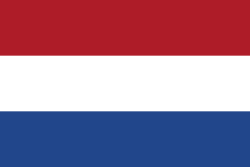Finvoice and Odoo: E-Invoices in the Euro Standard
Finnish branch of OBS has been busy lately creating a full implementation of the Finvoice Euro Standard (EN16931) for invoices.
By far the most important advantage of Eurostandard-compliant e-invoices is that they can be used to send invoices not only to Finland, but also to Sweden, Denmark, the Netherlands and many other EU countries.
Finvoice, the traditional standard for e-invoices in Finland, is defined and maintained by the Finnish Federation of Finance Industries. In Finland, more than 95% of business-to-business invoice traffic uses Finvoice invoices.
According to the Finnish developers, producing Finvoice-compliant invoice messages is not an easy task. The Finvoice format is nasty; its XML schema requires elements to be created in a very strict order. So, for example, in bank details, the BIC code element must appear before the IBAN number element of the bank account. Especially for those who are used to REST and JSON development tools, this often requires tolerating a moderate headache during development.
The European standard EN16931 is technically compatible with Finvoice. But being compatible with both Finvoice and euronorm introduces a huge number of new requirements for the message format. These requirements are due to the fact that Finvoice invoices compliant with the Euro standard can later be automatically converted to the pan-European Peppol invoice.
For example, Finvoice/Euronorm/Peppol invoices must have a common amount calculated for each type of VAT and credit invoices have different rules for the presentation of positive and negative amounts. And comments cannot be handled as flexibly as in Finvoice.
It may come as a surprise to many users of Finvoice invoices that Peppol invoices do not, in principle, allow the use of comment lines in the same way as Finvoice e-invoices. That is, without tax information, unit amounts and other information that is not usually included in text comments.
In a pure Peppol network, invoice text lines and descriptive texts should ideally be transmitted as a separate Invoice Image message, which is different from the invoice message. This sounds like an elegant and sophisticated solution. But when one digs deeper, it turns out that not all customers accept Invoice Image messages. In Sweden, for example, there are many customers who only accept invoices. Even the acceptance of credit notes differs between customers.
Here at OBS, we have developed a workaround for managing comments, so that Odoo comment lines can still be used as part of invoices. Our colleagues at Helsinki tell us that they have a number of customers whose customers assume that the specifications of the products delivered are also on the invoice as part of the text lines.
In our solution, OBS Finvoice/EN16931 invoices are transmitted via Visma Maventa's low-cost and reliable messaging network. This enhances the partnership between OBS and Visma to bring the best value solutions for integrating Odoo with local accounting and invoicing solutions.
Financial integrations with Odooho and all the most common Finnish accounting systems are available from OBS Finland. Ossi Mäntylahti, Country Director for OBS Finland, recently presented these at the Odoo Experience in Belgium. For more information click here.
You want to learn more about Finvoice solution? Contact us!



